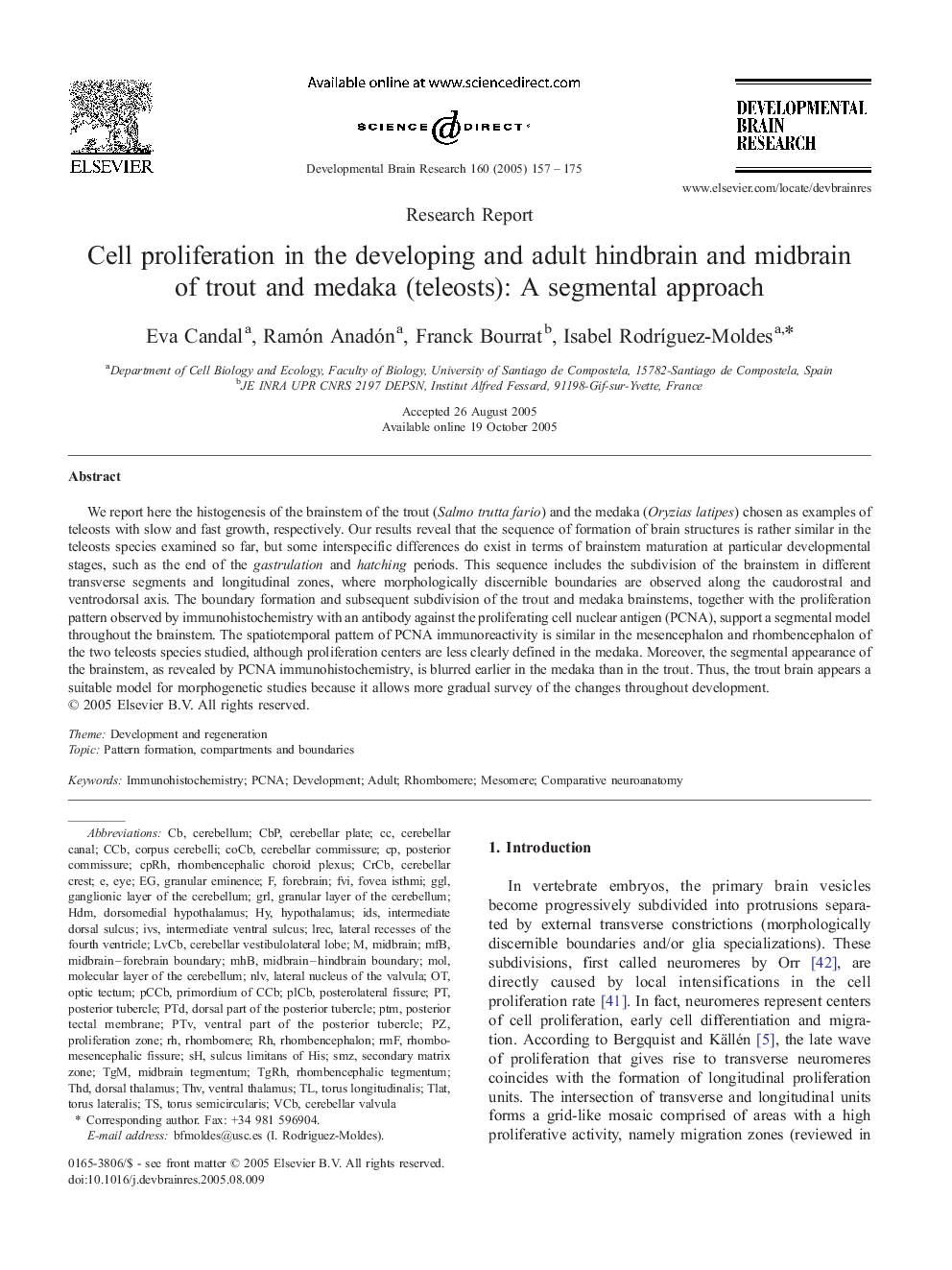| Article ID | Journal | Published Year | Pages | File Type |
|---|---|---|---|---|
| 9414489 | Developmental Brain Research | 2005 | 19 Pages |
Abstract
We report here the histogenesis of the brainstem of the trout (Salmo trutta fario) and the medaka (Oryzias latipes) chosen as examples of teleosts with slow and fast growth, respectively. Our results reveal that the sequence of formation of brain structures is rather similar in the teleosts species examined so far, but some interspecific differences do exist in terms of brainstem maturation at particular developmental stages, such as the end of the gastrulation and hatching periods. This sequence includes the subdivision of the brainstem in different transverse segments and longitudinal zones, where morphologically discernible boundaries are observed along the caudorostral and ventrodorsal axis. The boundary formation and subsequent subdivision of the trout and medaka brainstems, together with the proliferation pattern observed by immunohistochemistry with an antibody against the proliferating cell nuclear antigen (PCNA), support a segmental model throughout the brainstem. The spatiotemporal pattern of PCNA immunoreactivity is similar in the mesencephalon and rhombencephalon of the two teleosts species studied, although proliferation centers are less clearly defined in the medaka. Moreover, the segmental appearance of the brainstem, as revealed by PCNA immunohistochemistry, is blurred earlier in the medaka than in the trout. Thus, the trout brain appears a suitable model for morphogenetic studies because it allows more gradual survey of the changes throughout development.
Keywords
cerebellar crestTHDGGLLRECPCCBTHVFVIIVSIDSHDMVCBcerebellar plateSMZMFBposterior tubercleCBPTGMGRLTorus semicircularisPTDNLVRMFCCBPTVPTMRhombencephalonPCNAtorus longitudinalisMHbImmunohistochemistryadultventral thalamusdorsal thalamusmidbrain tegmentumTorus lateralisDevelopment and regenerationDevelopmentRhombomereOptic tectumPattern formation, compartments and boundariesComparative neuroanatomymolecular layer of the cerebellumgranular layer of the cerebellumCerebellumcorpus cerebellimidbrain–hindbrain boundaryMolMidbrainHypothalamusdorsomedial hypothalamusforebrainEyePosterior commissure
Related Topics
Life Sciences
Neuroscience
Developmental Neuroscience
Authors
Eva Candal, Ramón Anadón, Franck Bourrat, Isabel RodrÃguez-Moldes,
